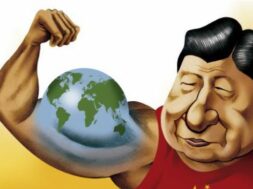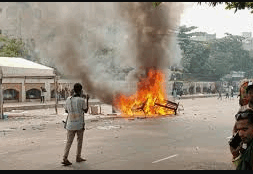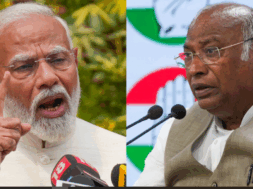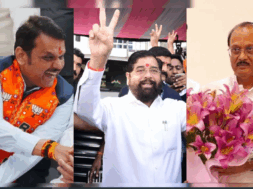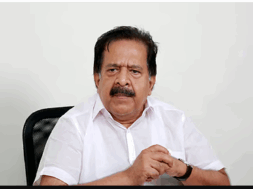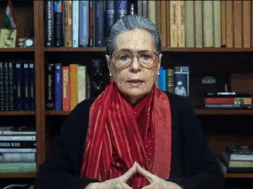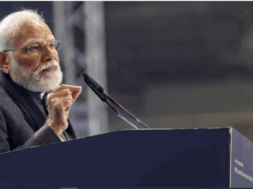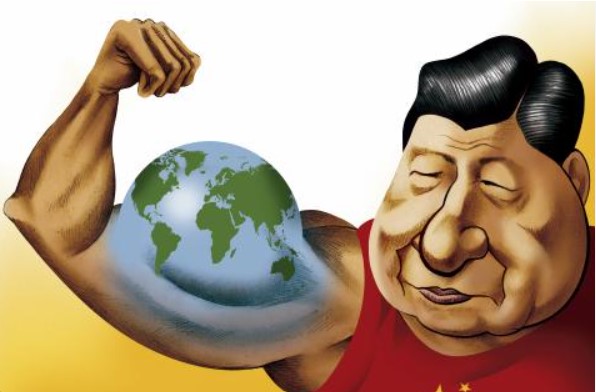
Roving Periscope: With the 18th G-20 Summit, a ‘world without China’ policy begins
Virendra Pandit
New Delhi: Trust China to sabotage anything good if it has no control over it.
That sums up why Xi Jinping skipped the just-concluded G-20 Summit.
Prime Minister Narendra Modi completely dominated the two-day event; besides, the powerful but ailing Chinese dictator had no appetite to face the frail democratic US President Joe Biden, or even Italian PM Georgia Meloni who has just walked out of China’s Belt and Road Initiative (BRI) network. Italy was the only European nation-member of China’s revivified Old Silk Route.
But Xi’s absence—his Russian counterpart Vladimir Biden, and another acolyte North Korean Kim Jong Un are already global pariahs—has completed China’s isolation on world forums, and a corresponding rise in India’s stature as the voice of the Global South, unless Beijing mends its old-fashioned revanchist policy and comes to terms with realpolitik.
That the G-20 Summit in New Delhi has been a resounding success is now well chronicled the world over. For the first time, this Group’s unanimous joint statement issued on the first day itself was a miracle; despite their absence, the Russian and Chinese Presidents had to give their consent to the joint declaration just to avoid their complete isolation; G-20 also enrolled the 55-nation African Union (AU) as a full member…But these are minor details.
The major details are: One, India has emerged as an alternative to and is fast dislodging China everywhere; Russia, anyway, is increasingly dependent on China and lost whatever prestige it still had on the world stage since it almost started the ‘Third World War’ by invading Ukraine in 2022.
The latest India-to-Europe rail and shipping route project to revive the ancient spice route is the answer to China’s tottering BRI.
China’s decline has been amazing. From a ‘wannabe world power’ until 2019, it is fast shrinking into its own shell. Despite its declining financial heft and tarnished image of debt-trapping, it is trying to control the world politically.
That Xi Jinping could skip the G-20 Summit started emerging soon after he returned from the recent BRICS Summit in South Africa, where he did not attend even the Business Forum meeting fearing ‘uncomfortable’ questions about the Chinese economy. Also, Beijing claimed that India had sought an “appointment” for PM Modi’s brief meeting with Xi Ping on the sidelines of the BRICS Summit in Johannesburg, a white lie New Delhi rejected immediately. This outright rejection indicated that Xi’s chances of attending the G-20 in New Delhi were slim, as he would not like to be embarrassed in the presence of many world leaders.
So, China started laying the ground for Xi’s absence in New Delhi.
On August 28, it followed its age-old obnoxious tactics and released a fabricated “standard map” that irked India, Japan, even Russia, and many Southeast Asian countries. On September 4, Beijing announced President Xi Jinping’s acolyte Li Qiang, “Premier of the State Council,” will attend the India event on September 9 and 10.”
Not only geopolitics or national politics, but even the economy is slipping out of China’s hands. It is getting diminishing returns on its investments, consumption is shrinking and so are its exports—all three pillars of its growth trajectory since the 1980s. Xi Jinping’s fears about a possible coup at home compounded after his Russian counterpart Putin faced a brief rebellion a few weeks ago.
That is why Xi purged the top commanders of the PLA’s Rocket Force (PLARF), followed by the mysterious death of PLARF deputy commander, Wu Guohua. These revealed a huge trust deficit at the very top of Communist leadership. Wei Fenghe, former commander of the PLARF and defense minister is also suspected.
Recently, Lan Jianxue, Director of the Asia-Pacific Institute of the China Institute of International Studies in the inhouse International Studies, explained Beijing’s line of thinking. He wrote that India was using world forums to promote the US-led West and even conniving with it in projecting itself as an “ideal choice” for “dislodging China from its position in the global supply chain.”
Since Galwan, he said, India has adjusted its strategy and policies towards China, “resorting to retaliatory and confrontational decoupling” across the spectrum.
He claimed that India has resorted to “digital suppression” of China by blocking hundreds of Chinese apps, deliberately delaying the approval process for mobile phone parts of Chinese brands such as Xiaomi and OPPO, and confiscating huge assets of Chinese companies such as Xiaomi. New Delhi has also restricted Chinese investment and purchase of Chinese equipment such as solar cell equipment, and the import of Chinese-made power generation, transmission, and distribution equipment.
His rant continued: India used the “rules of origin” policy to obstruct Chinese goods and services, deliberately blocked people-to-people and cultural exchanges between the two countries, and waged a “public opinion war” against China.
Ironically, he even complained about the “suppression of Chinese media” and cited the investigation of the Confucius Institutes in India as examples. He alleged that New Delhi is manipulating China’s core issues such as Tibet and Taiwan, sowing discord with China’s neighbors such as Nepal, Bhutan, Sri Lanka, etc., and trying to discredit the BRI.
All these steps, he said, are intended to force China to make concessions on the border issue and restore the status quo ante “as defined by India,” but will inevitably have an “unassessable backlash on its own interests and the long-term development of China-India relations.”
And then China’s real pain points emerged.
He said that India has taken the “full-scale suppression and containment” of China by the US as “a period of strategic opportunity” in which New Delhi is coordinating with Washington to promote the “de-Sinicization” at the economic and technological level. In the future too, the US will continue to “suppress and contain China” in an all-around way, and India will further “cater to the relevant actions” of the US.
In recent years, he said, India has deliberately highlighted its differences with China on regional and global governance and sustainable development, intending to push Beijing out of the “Global South.”
No wonder, China fears that concepts like Vasudhaiva Kutumbakam, one of the core values of the Indian civilization, will further dilute the influence of China’s own foreign policy pillar—“building a community of shared future for mankind” and “people-centric approach” in the Global South.
